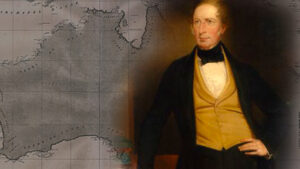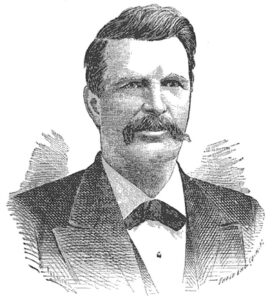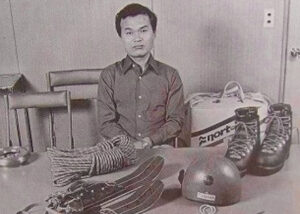Fifteen months. $10,000. A bicycle and a woman’s determination. In the late 1800s, during a period of suppressive social practices, a woman named Annie Londonderry decided to cycle around the world to win a bet.
In the early 1890s, two men from Boston supposedly wagered that no woman could travel the world by bicycle in 15 months. Apparently, the sum they put down was a princely $10,000.
From the mid-1800s onward, bicycles had become a regular mode of transport. Men used them to get to work. They became so popular that historians call this period “the bike craze.” Never before had getting from point A to point B been so easy and fast.
In 1887, a man named Thomas Stevens decided to use this relatively new method to travel around the world. Then along came Annie Londonderry, a woman who wanted in on the fuss.
Background
Annie Cohen Kopchovsky was born to Jewish Latvian immigrant parents who settled in the United States in 1875. She had a relatively mundane childhood. When she got older, she married a religious Orthodox Jew. She worked in advertising and eventually gave birth to three children. In that era, this was the norm: marriage, jobs, children. However, Annie longed for something other than the norm. The women’s suffrage movement could have been to blame.

Annie Londonderry rode across the world in a long skirt and corset. Photo: Grand Circle Cruise Line
In the United States, the suffrage movement had become immensely popular. The media started to get wind of unconventional ideas about the “new woman” — educated, independent, and career-driven. Londonderry considered herself such a new woman. National Geographic quotes her saying that she did not want to just stay at home and “have a baby every year.”
Left everyone behind
Whether or not the original $10,000 bet took place, we may never know. Some believe that Londonderry made it up to legitimize her decision to cycle alone around the world. She left her husband and three children behind. Some say she simply wished to escape them.
Nevertheless, she got herself a 40-pound Columbia bicycle and taught herself the bare minimum of how to ride before setting out from Massachusetts on June 27, 1894. She did not opt for men’s trousers, as many would have expected, but rode in a skirt and corset.

She dropped her surname of Cohen Kopchovsky in favor of Londonderry as a tribute to her first sponsor, New Hampshire’s Londonderry Lithia Spring Water Company. They gave her $100. She also changed her name to protect herself at a time when anti-Semitism was common.

The road less traveled
The journey was long and strenuous. At the time, roads, infrastructure, and travel comforts were in their infancy. Londonderry was a petite woman, just 5 feet 3 inches and 100 pounds. By the time she reached Chicago, she had lost 20 pounds. During her travels, she also suffered the occasional injury, such as a broken wrist. She fell several times and almost got run over by a horse. The unpaved, bumpy roads made cycling even more challenging. It took her three months to pedal from Massachusetts to Chicago.
Yet Londonderry was resourceful and knew how to sustain her travels. She sold advertising space on her bike and gave lectures and interviews. She also gained interested benefactors from her exaggerated storytelling, according to a distant relative of hers, who later wrote her biography. Her stories ranged from fighting Bengal tigers to fending off bandits — some of whom she allegedly killed — to incarceration in a Japanese prison. She even claimed that she was an heiress and related to a famous politician. These claims weren’t true but served as a tool for financing.
Travels and controversy
Annie rode through France, Egypt, Israel, Yemen, Sri Lanka, Singapore, Vietnam, China, Japan, and back to the United States through California. She rode through Arizona, New Mexico, Texas, Colorado, Wyoming, Nebraska, Iowa, Illinois, and then home to Massachusetts. She had two weeks to spare and qualified for the $10,000 award. Whether she ever collected it or not is another of several vague parts of her story.
It’s also questionable whether she was the first woman to ride the world by bicycle since she spent a lot of time on boats.
After her journey, she returned home and settled back into domestic life. She never rode again.
Legacy
The New York World newspaper referred to her story as “the most extraordinary journey ever undertaken by a woman.” Yet her legacy slowly faded into obscurity.
Perhaps in her time, a woman disregarding her duties as a mother and wife to explore the world would have encouraged others to do the same. Did her tendency to sensationalize cause people to not take her seriously? Maybe. However, one cannot dismiss what she achieved, especially as she battled criticism and hostility from all fronts.
Annie Londonderry used her bicycle as a symbol to encourage women to drive their destinies and make their own choices. Bikes were agents of change and a symbol of autonomy.






